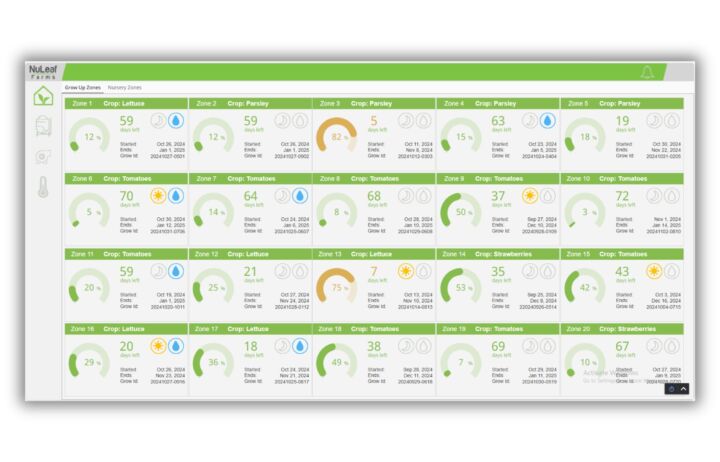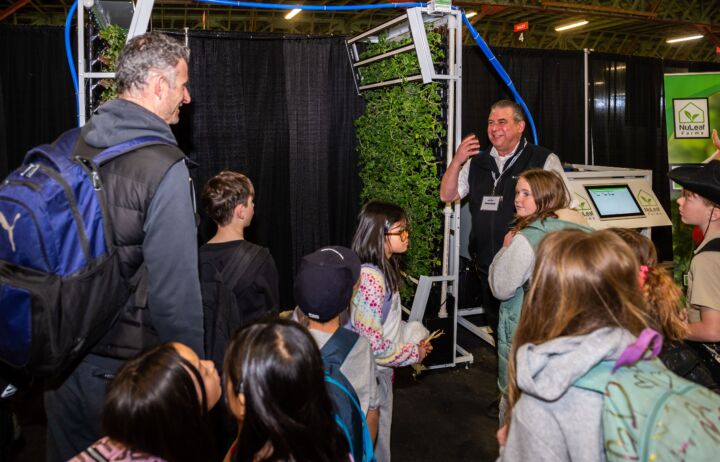
Embracing Small-Scale Indoor Farming: Cultivating a Circular Economy for Resilient Communities
In the ever-evolving landscape of agriculture and food production, one concept that stands out for its sustainability, resilience, and local community impact is small-scale indoor farming. This innovative approach to farming holds immense promise not only for urban environments but also for rural, remote communities, food banks, restaurants, and commercial kitchens. In this article, we’ll explore the exciting potential of small-scale indoor farming and its role in advancing the principles of the circular economy.
Redefining Farming in Unlikely Places
One of the most striking aspects of small-scale indoor farming is its adaptability to a wide range of settings. Traditionally, farming has been associated with vast rural landscapes, but indoor farming flips this narrative on its head. With the right technology and expertise, small indoor farms can thrive in urban apartments, food banks, and even the heart of remote communities. This adaptability is a game-changer, enabling fresh, locally grown produce in areas where it was once a distant dream.
Reducing Food Miles, Maximizing Sustainability
The circular economy concept promotes reducing waste and making the most of available resources. Small-scale indoor farming aligns perfectly with these principles by minimizing food miles and resource use. Imagine food banks and restaurants sourcing their ingredients from on-site indoor farms, reducing the need for long-distance transportation. This not only cuts carbon emissions but also ensures that fresh produce is always at hand.
Year-Round Crop Production and Climate Resilience
Small indoor farms provide the advantage of year-round crop production, regardless of external weather conditions. In remote communities, where extreme climates can limit traditional farming, this offers a lifeline for food security. Restaurants and commercial kitchens can enjoy a steady supply of seasonal ingredients, reducing their dependency on imported goods.
Empowering Communities and Local Economies
Integrating small-scale indoor farming into rural and remote communities empowers residents by creating opportunities for local food production and entrepreneurship. It reduces dependency on external sources, boosts local economies, and creates jobs. For businesses like restaurants and food banks, this translates into a reliable source of fresh, local produce, enhancing their community engagement and reputation.
Challenges and Solutions
While the benefits are clear, it’s essential to acknowledge the challenges of indoor farming. Setting up and maintaining these farms can be resource-intensive. Proper planning of potential projects is critical to ensure successful operations. When approached with a new project, we start with the same list of questions, that once resolved, often determine the viability of a project. These questions include;
1) Which types of crops need to be grown and how much production is required every week?
2) Is there a clear understanding of where the product will be sold/used and what are the associated economics?
3) What are the infrastructure limitations?
In our experience, groups that have a clear objective for the project beyond “we want to grow food” typically have better financial, social, and environmental impacts in the long run.
Seizing the Circular Economy Opportunity
Small-scale indoor farming is not just about growing crops; it’s about growing communities, sustainability, and resilience. For rural, remote communities, food banks, restaurants, and commercial kitchens, incorporating this technology into day-to-day operations brings numerous benefits. When done correctly, this technology can reduce food costs & miles, enhance sustainability, ensure year-round crop availability, and foster local economic growth.
The circular economy is about closing the loop, and small-scale indoor farming can play a significant role in this journey. It’s time for businesses and communities to recognize the tremendous value proposition that indoor farming offers. By doing so, we can strengthen our commitment to sustainability, empower local communities, and transform the way we produce and consume food.








